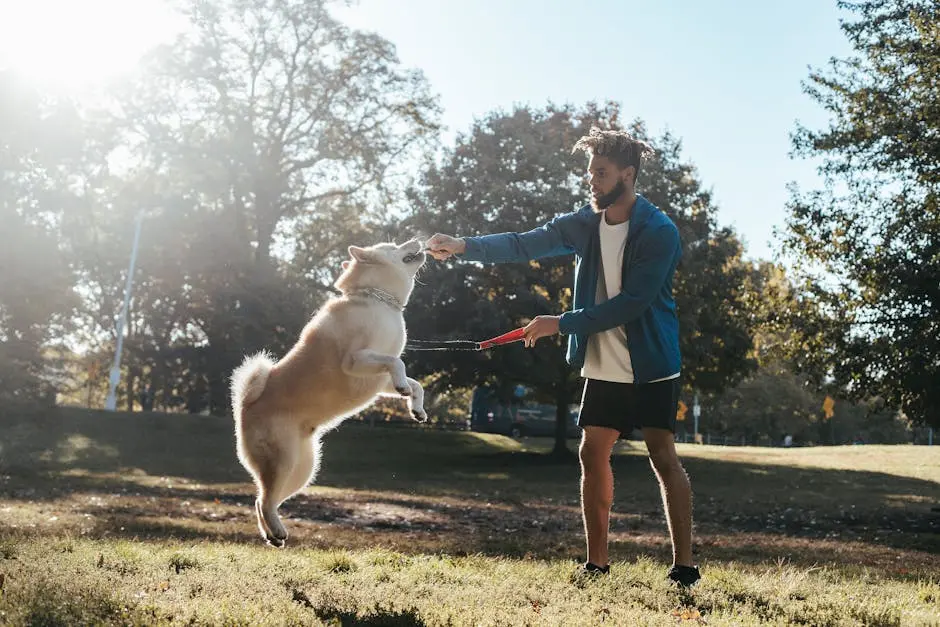Training a dog in Madison, or any city, can come with its own unique set of challenges. From understanding breed-specific behaviors to dealing with distractions, there are several hurdles pet owners might face. This FAQ aims to address these common challenges and provide effective solutions to make dog training a smoother experience.
Challenge 1: Dealing with Distractions in Public Spaces
Madison is full of parks and bustling streets, which can be incredibly distracting for dogs. Teaching your dog to focus on you amidst these distractions involves consistent training and positive reinforcement techniques.
Start your training in quieter areas before gradually introducing more stimulating environments. Rewards like treats or toys can be used to maintain your dog’s attention. Techniques such as ‘look at me’ commands are beneficial in redirecting their focus. For instance, when your dog successfully responds amidst distractions, immediately reinforce it with praise, which helps them associate focus with positive outcomes.
It is also essential to recognize your dog’s threshold for distractions. Every dog has different tolerance levels, and pushing them beyond this can lead to frustration. For new environments, gradually increase exposure and always communicate with your dog both with verbal and non-verbal cues to ensure they understand the expected behavior.
Challenge 2: Addressing Breed-Specific Behaviors
Different breeds have unique traits and temperaments. Understanding these characteristics is crucial in tailoring your training approach. Researching your dog’s breed can provide insights into effective training methods.
Breeds like Border Collies, known for their high energy, thrive on activity-based training, while breeds like Bulldogs might require more patience due to their laid-back nature. Knowing these distinctions allows you to adjust your methods accordingly, ensuring you meet their mental and physical needs.
To cater to these characteristics, customize your training sessions. For high-energy breeds, incorporating agility training and interactive puzzles can be effective. For more laid-back breeds, focus on social walks and incremental command training, reinforcing progress with consistent reward systems.
Challenge 3: Managing Socialization with Other Dogs
Proper socialization is essential to prevent aggression and anxiety in dogs. Slowly introducing your dog to other dogs and using controlled environments can help in building healthy social habits.
Start with one-on-one introductions before progressing to larger groups. Collating these activities with positive experiences ensures your dog associates social environments with enjoyment. Using places like local dog parks can provide diverse interactions in a regulated environment.
Be observant of your dog’s body language during these encounters. Signs of stress or aggression mean it is time to step in and support them in de-escalating. Regular socialization opportunities, coupled with positive reinforcement, reinforce embracing the presence of other dogs healthily.
Challenge 4: Consistency in Training Routines
Consistency is key to effective training. Establishing a regular schedule and sticking to it helps dogs learn and retain commands better.
Create a structured plan outlining daily training routines that are simple for everyone in the household to follow, which contributes to a unified training approach. Regular reviews of training achievements can help identify what works best and ensure continuity in methods.
Incorporating training into daily walks or snack times reinforces routines naturally. Repeated exposure to the same commands engrains desired behaviors, making them habitual and automatic for your pet.
Challenge 5: Overcoming Fear and Anxiety
Dogs can exhibit fear or anxiety due to past experiences or environmental factors. Providing a safe space, using calming techniques, and sometimes seeking professional help can significantly reduce these issues.
Identify triggers for anxiety to better address them in your training. Counterconditioning—pairing negative experiences with something positive—can make a world of difference. Soft music, essential oil diffusers, or a comforting item like a favorite toy can be calming influenced in anxiety-reducing strategies.
Professional assistance, such as behavior consultation, can offer tailored solutions to understand and mitigate these fears. As discussed in our behavioral improvement services, personalized assistance often yields notable progress.
Conclusion: Empower Your Dog Training Journey
Dog training in Madison doesn’t have to be a frustrating experience. By understanding common challenges and applying practical solutions, you can foster a rewarding relationship with your dog. Remember, patience and consistency are key in overcoming any training obstacles.


